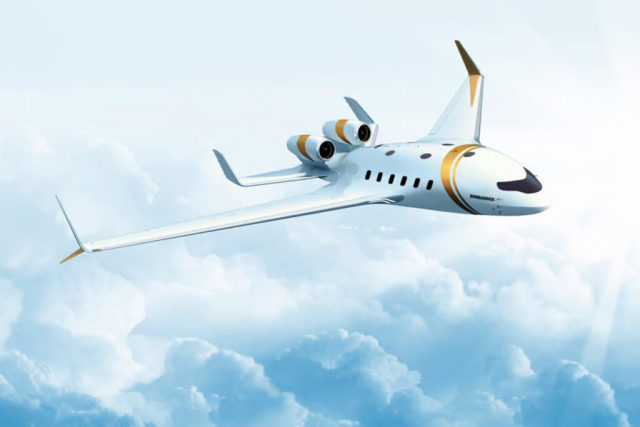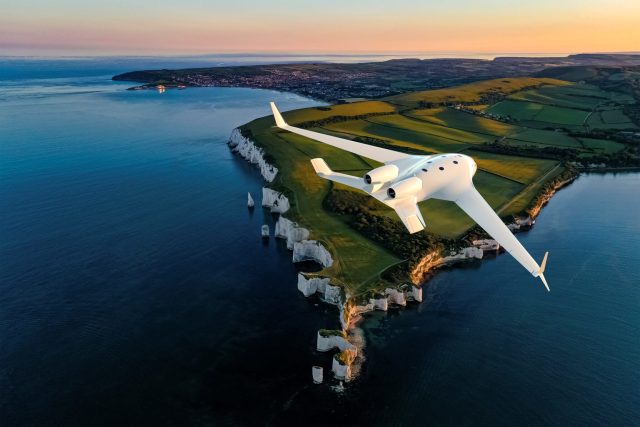The company is building a second prototype of the Ecodjet and claims that the new aircraft will "reduce emissions" by 50%. From a technical point of view, this is almost impossible without leaving kerosene. Probably, we are talking about switching to other types of fuel.
Representatives of the Canadian company Bombardier said that they have moved on to testing the second prototype of their Ecodget business jet, which differs from conventional aircraft in the shape of the fuselage. This design is called a "mixed wing": the fuselage is significantly flattened and creates a noticeable part of the lift of the aircraft as a whole. Earlier, the company tested the first, greatly reduced in size relative to the real machine, the prototype of the "Eco-Jet".
Bombardier has not yet spread about the specific parameters of the novelty, except for the thesis that "emissions" will be 50% less than today's aircraft. It is almost impossible to reduce emissions of harmful microparticles. A business jet, even with a mixed wing, is not so large as to have enough liquid hydrogen for long-distance flights. As Naked Science has already written, liquid hydrogen tanks should be four times larger than kerosene ones.
Theoretically, methane tanks can fit into the device shown. They should be only 1.6 times larger than kerosene with an equal amount of stored energy. The mixed wing creates a free volume where methane tanks of reasonable capacity can be placed, but not hydrogen tanks.
However, this thesis is contradicted by Bombardier's statement about "reducing emissions by 50%." In the modern Western world, vehicle manufacturers most often mean carbon dioxide emissions by "emissions". The transition from modern kerosene to methane can reduce such emissions by at most 10%, no more.
It follows from this that Bombardier is almost certainly designing its "Eco-gadget" for "sustainable aviation fuel". Kerosene with the addition of oils and fats of biological origin appears under this name in the West. During combustion, they emit exactly the same amount of CO2 as conventional jet fuel, but, according to Western standards, CO2 taken from a "biological" source is not considered carbon dioxide — they say, during the decomposition of plant products, it would have entered the atmosphere anyway. This, of course, is not entirely true (plant residues often do not have time to decompose in the soil), but from the point of view of the aviation industry it is very convenient.
It is convenient because by 2050 the West aims aviation at "zero emissions". Some time ago, local companies expected that they would achieve this by switching to hydrogen. However, after the designers showed that the internal volume of the aircraft does not allow switching to liquid hydrogen without a sharp loss of range, the aviation giants focused on how to achieve "zero emissions", continuing to emit the same amount of CO2, simply declaring their liquid fuel "biofuel".

Judging by the location of the portholes, it does not look like the internal tanks of the new aircraft were seriously larger than usual
Image Source: Bombardier
The mixed wing in this sense has obvious potential. Nobody knows how to make completely "biological" kerosene yet. You can try to redesign the turbines so that you can fly on "biodiesel", but this is not an easy job (for a number of reasons, diesel fuel does not behave perfectly at high altitude at low temperatures). In such conditions, it is reasonable to create a "volume reserve" for the aircraft of the future.
In addition, the use of a mixed wing allows you to slightly reduce the absolute fuel consumption by increasing the lift of the aircraft while maintaining the same payload and less aerodynamic drag from the wing. This, in theory, allows you to reduce fuel consumption by 10-20% (depending on the level of implementation).

